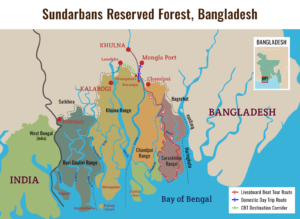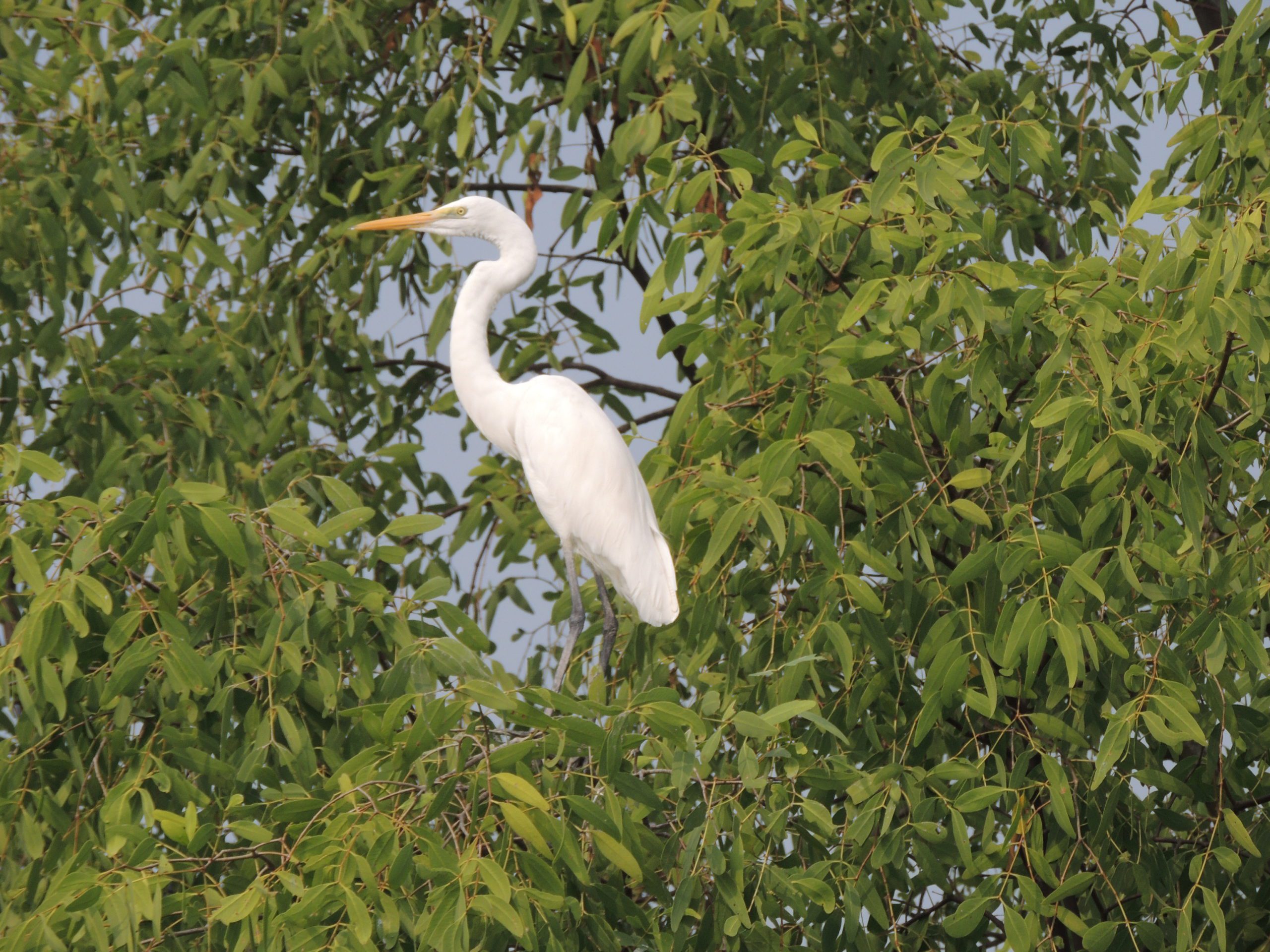The Sundarbans Reserve Forest is located in southwest Bangladesh between the river Baleswar in the East and the Harinbanga in the West, extending to the Bay of Bengal. It is Bangladesh’s most iconic tourist destination and arguably the most important protected area covering about 40 percent of forested land in Bangladesh. Formed 7000 years ago through sediment deposition carried from the Himalayan foothills to the south of the Ganges floodplain, the Sundarbans dwindled to about 1/3 of its original size, 16,700 km² (measured about 200 years ago). The Sundarbans is a critical area for economically important fisheries, coastal communities, and the iconic Bengal tigers.
Apart from tigers, the Sundarbans is a proud habitat of many charismatic and globally threatened species such as the Salt-water Crocodile (largest living crocodile species in the world), Ring Lizard (the second largest lizard species in the world after the Comodo Dragon), King Cobra (longest venomous snake in the world), Burmese Python, Ganges River Dolphin, Irrawaddy Dolphin, Northern River Terrapin, Masked Finfoot, Pallas’s Fish Eagle, White-rumped Vulture, Slender-billed Vulture, Lesser Adjutant, Mangrove Pitta, Great Knot, Green Frog, etc. Sundarbans is also home to about 10 species of kingfisher. Sadly, some exquisite animals that once roamed in the Sundarbans can no longer be seen: Water Buffalo, Swamp Deer, Javan Rhinoceros, Indian Rhinoceros, and Fresh-water Crocodile which urges for higher protection for the remaining natural resources.
The Sundarbans provides sustainable livelihoods for millions of people and act as a shelter belt to protect the people from storms, cyclones, tidal surges, seawater seepage, and intrusion. A total of 7.79 million people live in the Sundarbans Impact Zone, with about 28 percent of people from this zone directly dependent on the Sundarbans for their livelihoods, including woodcutters, fishermen, crab collectors, honey collectors, and Nypa palm collectors. While the legal protection afforded the protected area prohibits several activities within the boundaries, threats to the area continue to include wildlife poaching, unsustainable forest resource collection, illegal fishing, human-wildlife conflict, climate change, unplanned development works, river pollution, reduction of freshwater flow, etc. (UNESCO, World Heritage Centre 2021). Industrial growth has the potential to create ecological imbalances and harm in the Sundarbans, and alternate tourism market schemes can help advocate for sustainable management strategies of the Sundarbans to ensure jobs and economic growth in Bangladesh. The direct contribution of travel and tourism to the GDP of Bangladesh was 2.2% of the total GDP in 2016 and is forecasted to raise by 9.5% by 2027.




